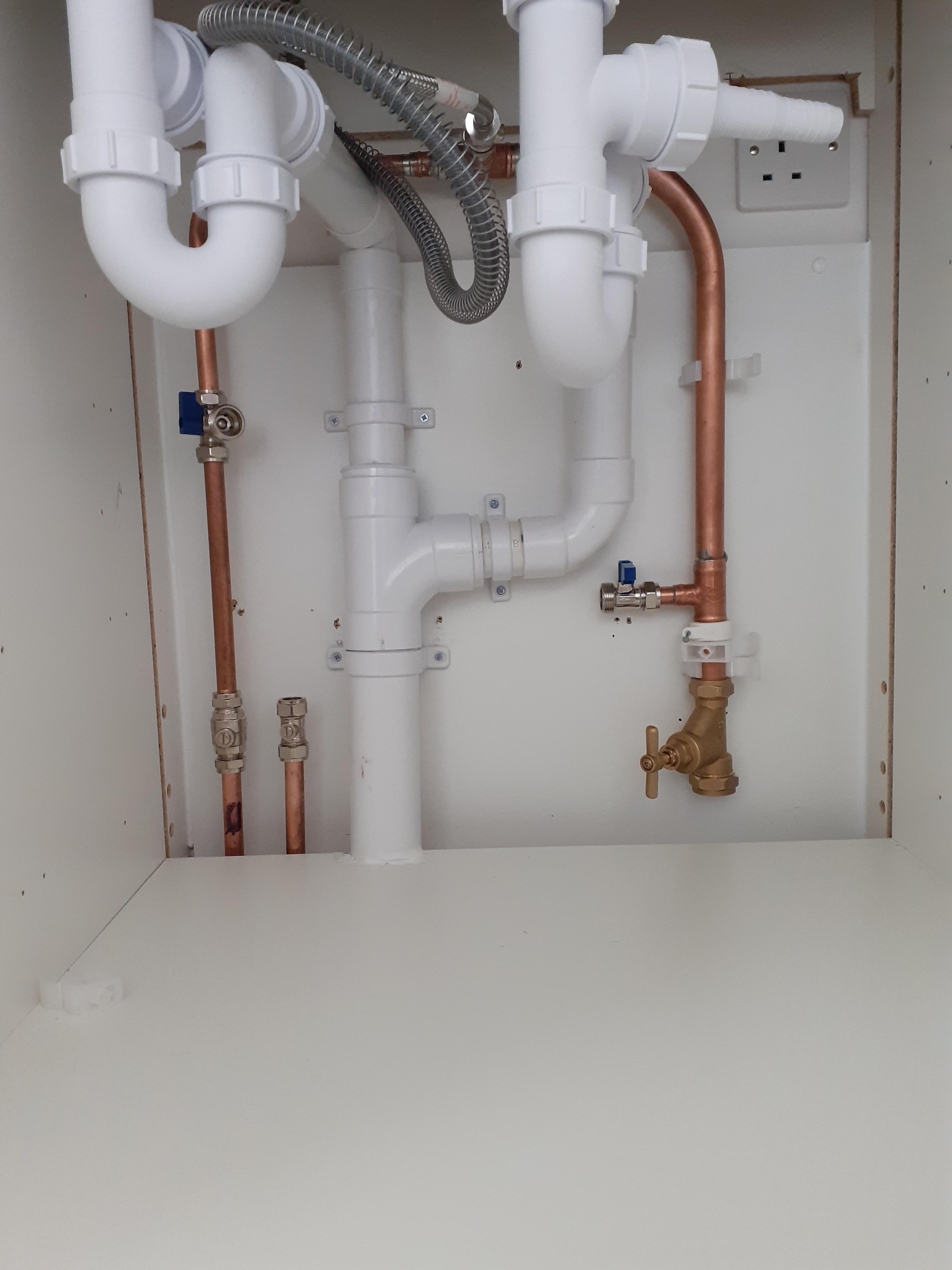If you've ever had to fix a leaky pipe or replace a worn out faucet in your kitchen sink, then you know how important it is to have a basic understanding of the plumbing hose connections under your sink. These connections are what keep your sink functioning properly and any issues with them can quickly turn into a bigger problem. In this article, we'll take a closer look at the top 10 main plumbing hose connections under your kitchen sink and how to maintain them to avoid any potential disasters.1. Understanding the Plumbing Hose Connections Under Your Kitchen Sink
The first and most important connection under your sink is the water supply hose. This is the hose that brings fresh water into your sink from the main water supply. It is usually connected to the bottom of your faucet and is responsible for providing clean water for washing dishes, cooking, and drinking. When installing or replacing this hose, make sure to use a high-quality, durable hose to avoid any leaks or bursts. It's also important to regularly check and tighten the connections to ensure a secure fit.2. The Water Supply Hose Connection
The next important connection is the drain hose, which is responsible for carrying dirty water away from your sink and into your home's sewage system. This hose is usually connected to the bottom of your sink's drain and can sometimes become clogged with food particles and debris. To prevent clogs, it's important to regularly clean the drain hose and avoid pouring grease or oil down your sink. If you do notice a clog, use a plunger or a plumbing snake to clear it before it becomes a bigger issue.3. The Drain Hose Connection
If you have a dishwasher in your kitchen, then you also have a dishwasher hose connection under your sink. This hose is responsible for carrying dirty water from your dishwasher into your home's sewage system. It is usually connected to the side or back of your sink's drain. To ensure proper functioning of your dishwasher, make sure to regularly check and clean this hose for any clogs or leaks. You may also need to replace this hose if it becomes worn out or damaged over time.4. The Dishwasher Hose Connection
If you have a garbage disposal in your sink, then you also have a garbage disposal hose connection. This hose is responsible for carrying food scraps and debris from your disposal into your home's sewage system. It is usually connected to the side or bottom of your disposal unit. To keep your garbage disposal running smoothly, it's important to regularly clean and maintain this hose. You may also need to replace it if it becomes clogged or damaged.5. The Garbage Disposal Hose Connection
Depending on the type of faucet you have, you may have separate hot and cold water hose connections under your sink. These hoses are responsible for delivering hot and cold water to your sink and are usually connected to the bottom of your faucet. Make sure to regularly check and maintain these connections to avoid any leaks or bursts. You may also need to replace them if they become damaged or worn out over time.6. The Hot and Cold Water Hose Connections
The shut-off valve hose connection is an important one to know, as it is responsible for cutting off the water supply to your sink in case of an emergency or when making repairs. It is usually connected to the bottom of your shut-off valve, which is located under your sink or in a nearby cabinet. Make sure to regularly test and maintain this connection to ensure it is functioning properly in case of an emergency. You may also need to replace the shut-off valve if it becomes worn out or damaged.7. The Shut-Off Valve Hose Connection
If you have a sprayer attachment on your faucet, then you also have a sprayer hose connection under your sink. This hose is responsible for delivering water to the sprayer and is usually connected to the side or back of your faucet. To ensure proper functioning of your sprayer, regularly check and maintain this hose for any clogs or leaks. You may also need to replace it if it becomes damaged or worn out.8. The Sprayer Hose Connection
If you have a dishwasher, then you also have an air gap hose connection under your sink. This hose is responsible for preventing dirty water from flowing back into your dishwasher and is usually connected to a small cylindrical device on your sink's countertop. Make sure to regularly clean and maintain the air gap to prevent any clogs or backups in your dishwasher. You may also need to replace the air gap if it becomes damaged or clogged over time.9. The Air Gap Hose Connection
If you have a gas stove or oven in your kitchen, then you also have a gas hose connection under your sink. This hose is responsible for delivering gas to your stove or oven and is usually connected to a shut-off valve in your home's gas supply line. It's important to regularly check and maintain this connection to ensure there are no leaks or safety hazards. You may also need to replace the gas hose if it becomes damaged or worn out.10. The Gas Hose Connection (If Applicable)
How to Properly Connect Plumbing Hoses Under Your Kitchen Sink
/how-to-install-a-sink-drain-2718789-hero-24e898006ed94c9593a2a268b57989a3.jpg)
When it comes to designing a functional and efficient kitchen, proper plumbing connections are essential. The kitchen sink is one of the most heavily used areas in the kitchen, and it is important to ensure that the plumbing hose connections are properly installed to avoid any leaks or damages. In this article, we will discuss the steps for properly connecting plumbing hoses under your kitchen sink.
Step 1: Gather the Necessary Tools and Materials

Before starting the installation process, it is important to gather all the necessary tools and materials. This includes a wrench, screwdriver, Teflon tape, and the new plumbing hoses. Make sure to check the sizes of the existing hoses and purchase the correct replacements.
Step 2: Shut Off the Water Supply

Before removing any old plumbing hoses, be sure to shut off the water supply to the kitchen sink. This can usually be done by turning off the main water supply valve under the sink or at the main water supply for the house. It is important to release any pressure in the hoses by turning on the faucet before shutting off the water supply.
Step 3: Disconnect the Old Hoses

Using a wrench, carefully loosen and remove the old plumbing hoses from the sink and the water supply valves. Be sure to have a bucket or towels handy to catch any remaining water in the hoses. Inspect the hoses for any damages or wear and tear and replace them if necessary.
Step 4: Apply Teflon Tape

To ensure a tight and secure connection, apply Teflon tape to the threads of the new hoses. This will create a watertight seal and prevent any leaks.
Step 5: Connect the New Hoses

Using the wrench, carefully connect the new plumbing hoses to the sink and the water supply valves. Make sure to tighten the connections to avoid any potential leaks.
Step 6: Turn on the Water Supply and Test

Once all the connections are secure, turn on the water supply and test the new plumbing hoses by running the faucet. Check for any leaks or drips and make any necessary adjustments.
Step 7: Properly Secure the Hoses

After testing, make sure to properly secure the hoses to the sink and the water supply valves. This will prevent any potential damage or leaks in the future.
Properly connecting plumbing hoses under your kitchen sink is an important step in ensuring a functional and efficient kitchen. By following these steps and using the right tools and materials, you can have a secure and leak-free plumbing system in your kitchen.

















